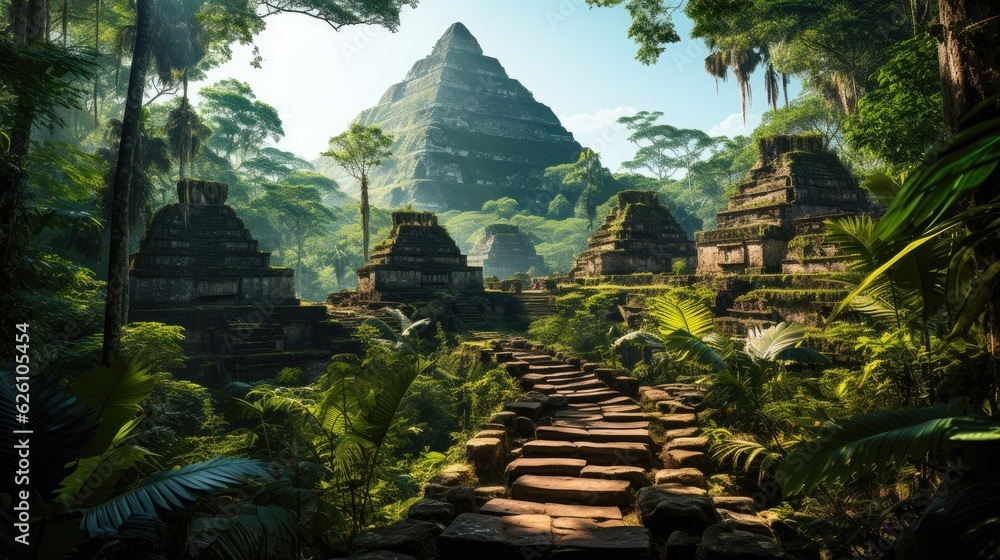Pottokosh
Pottokosh is the Karni name for a large complex of ruins located near the headwaters of the Kaldee River. It is located in the northeast corner of the Corsair Kingdom of Karnesh and traditionally denotes the furthest extent of Oshahni control in the area. The name Pottokosh means "place of the pony" in the Karni tongue.
Within the ruined complex of Pottokosh there is a regular garrison of Oshahni troops numbering less than 20 and a small self-sufficient village of Karni that live nearby and provide sustenance and support for the Oshahni. The villagers number about 100 and live a relatively peaceful life hunting and gathering what they need from the nearby wilderness while living in stone houses clustered along the banks of the Kaldee River, about 400 yards from the entrance to the ruins.
Purpose / Function
Long assumed to be an ancient site of worship, the actual original purpose of the site is unknown. It is utilized today as a base of operations for the Oshahni rulers of Karnesh to patrol the area at the eastern extent of the Vias Ebonaas roadway that connects the western and eastern extremes of the Karnesh territory.
Design
The site at Pottokosh is actually quite large. Encompassing nearly a half-square mile of area, it has dozens of still intact structures and three very large pyramids. There are sections of defensible walls enclosing roughly half the site, and the fallen and collapsed sections create a broken and difficult approach to the interior due to the size and nature of the stone blocks. Remaining roads are paved with stone slabs that are typically covered with a thin layer of dirt and debris that allows a carpet of short, thich grass to grow nearly everywhere.
Denizens
The village of Pottokosh consists of just over 100 Karni individuals that have managed to settle the area between the bank of the Kaldee River and the walls of the ancient settlement. Consisting of some dozen small but well-built stone houses constructed of cut stone reclaimed from the ruins, these native families draw their livelihood from the wilderness by fishing, hunting and gathering necessary food and supplies from the surrounding wilderness.
As the name of the site conveys, there is a natural population of wild ponies in the area that are attracted to the complex because of the lack of trees and a greater abundance of grasses. This has the added disadvantage of also attracting very dangerous and aggressive predators to the area, including Carnifex, Arakan Tigers, and Hill Giants.
Architecture
The ancient site of Pottokosh contains three large step pyramids, the largest of which stands more than 150' high and provides a particularly effective vantage point for observing the local surroundings. Interspersed among these pyramids are dozens of smaller stone platforms, buildings and squares that create a confusing and complicated maze of paths, alleys and stairways.
Defenses
The Oshahni garrison at Pottokosh usually numbers about 15 soldiers with a single officer leading them. These men are poorly trained, under-motivated and (when not sleeping) nearly constantly drunk. Patrols are few and never venture very far from direct line of sight of the tallest pyramid in the complex. The garrison soldiers are rotated out every four to six weeks via the Kaldee River.
The garrison has occupied a still intact structure at the base of the tallest pyramid and very, very rarely ventures very far beyond this portion of the site. They have regular deliveries of food, fuel and alcohol brought to them daily by the local Karni villagers which helps to keep them in their preferred living area. Most patrol efforts are limited to climbing the sides of the pyramid to maintain an inconstant lookout from the top of the structure once a day.
A view of the ruins of Pottokosh as seen from the top of the tallest pyramid structure
A view of the tallest Pottokosh pyramid from outside the complex




